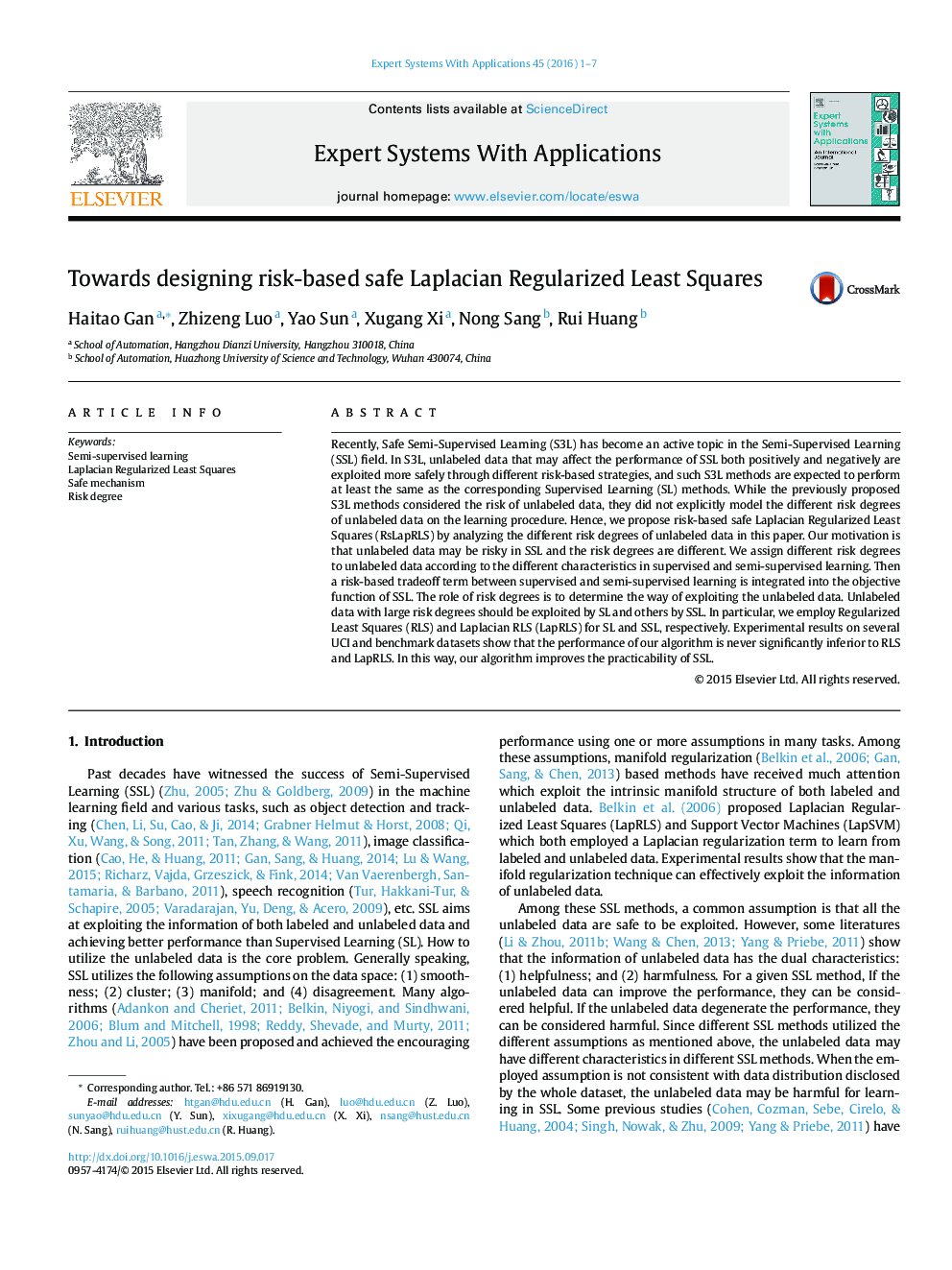| Article ID | Journal | Published Year | Pages | File Type |
|---|---|---|---|---|
| 382437 | Expert Systems with Applications | 2016 | 7 Pages |
•We propose a risk-based safe Laplacian Regularized Least Squares method.•Risk degree is computed by analyzing different characteristics in RLS and LapRLS.•The performance of proposed algorithm is never significantly inferior to that of RLS and LapRLS.•The performance of our algorithm is relatively stable with respect to the tradeoff parameter λ.
Recently, Safe Semi-Supervised Learning (S3L) has become an active topic in the Semi-Supervised Learning (SSL) field. In S3L, unlabeled data that may affect the performance of SSL both positively and negatively are exploited more safely through different risk-based strategies, and such S3L methods are expected to perform at least the same as the corresponding Supervised Learning (SL) methods. While the previously proposed S3L methods considered the risk of unlabeled data, they did not explicitly model the different risk degrees of unlabeled data on the learning procedure. Hence, we propose risk-based safe Laplacian Regularized Least Squares (RsLapRLS) by analyzing the different risk degrees of unlabeled data in this paper. Our motivation is that unlabeled data may be risky in SSL and the risk degrees are different. We assign different risk degrees to unlabeled data according to the different characteristics in supervised and semi-supervised learning. Then a risk-based tradeoff term between supervised and semi-supervised learning is integrated into the objective function of SSL. The role of risk degrees is to determine the way of exploiting the unlabeled data. Unlabeled data with large risk degrees should be exploited by SL and others by SSL. In particular, we employ Regularized Least Squares (RLS) and Laplacian RLS (LapRLS) for SL and SSL, respectively. Experimental results on several UCI and benchmark datasets show that the performance of our algorithm is never significantly inferior to RLS and LapRLS. In this way, our algorithm improves the practicability of SSL.
